Tivoli with Ortelius and Hoefnagel
Detail
Date of first edition: 1581
Date of this map: 1581
Dimensions (not including margins): 45,5 x 33 cm
Dimensions (including margins): 54,7 x 41,3 cm
Condition: Very good. Strong paper and wide margins. Centre fold as published. Tear in right margin, not affecting the map.
Condition rating: A
Verso: text in Latin
References: Van der Krogt 4, 4330; Taschen, Br. Hog., p.257
From: Civitates Orbis Terrarum: Urbium praecipuarum totius mundi, liber tertius, first edition 1581
In stock
Tivoli commented by Braun (on verso):
“Tivoli is a very beautiful city in Latium with mild and temperate air. For this reason, even long ago wealthy Romans liked to stay here during the heat of the summer. Here there are also several stone quaries, where the stone that is named after Tivoli comes from. Many of the splendid houses in Rome were made with this stone. Below Tivoli and the River Aniene there are many cool streams that have therapeutic effects, not only from drinking the water but also from bathing in it.”
CAPTION: Tiburtum, in Italian Tivoli.
Taschen on Tivoli:
This is a view from the northeast of the city of Tivoli, situated on a plateau above the gorge of the River Aniene. The spire of the cathedral of San Lorenzo rises above the city; on the left is the castle, known as the Roca Pia. From the first century BC, Tivoli was a resort for the Romans during the summer months, some important ancient monuments have been preserved, such as the Villa Adriana outside the city walls, which, together with the Villa d’Este, is a UNESCO World heritage Site. On the left are Abraham Ortelius and Georg Hoefnagel descending the slope during their visit to Tivoli in 1578. Hoefnagel is directing the viewer’s attention to the impressive waterfall of the Aniene.
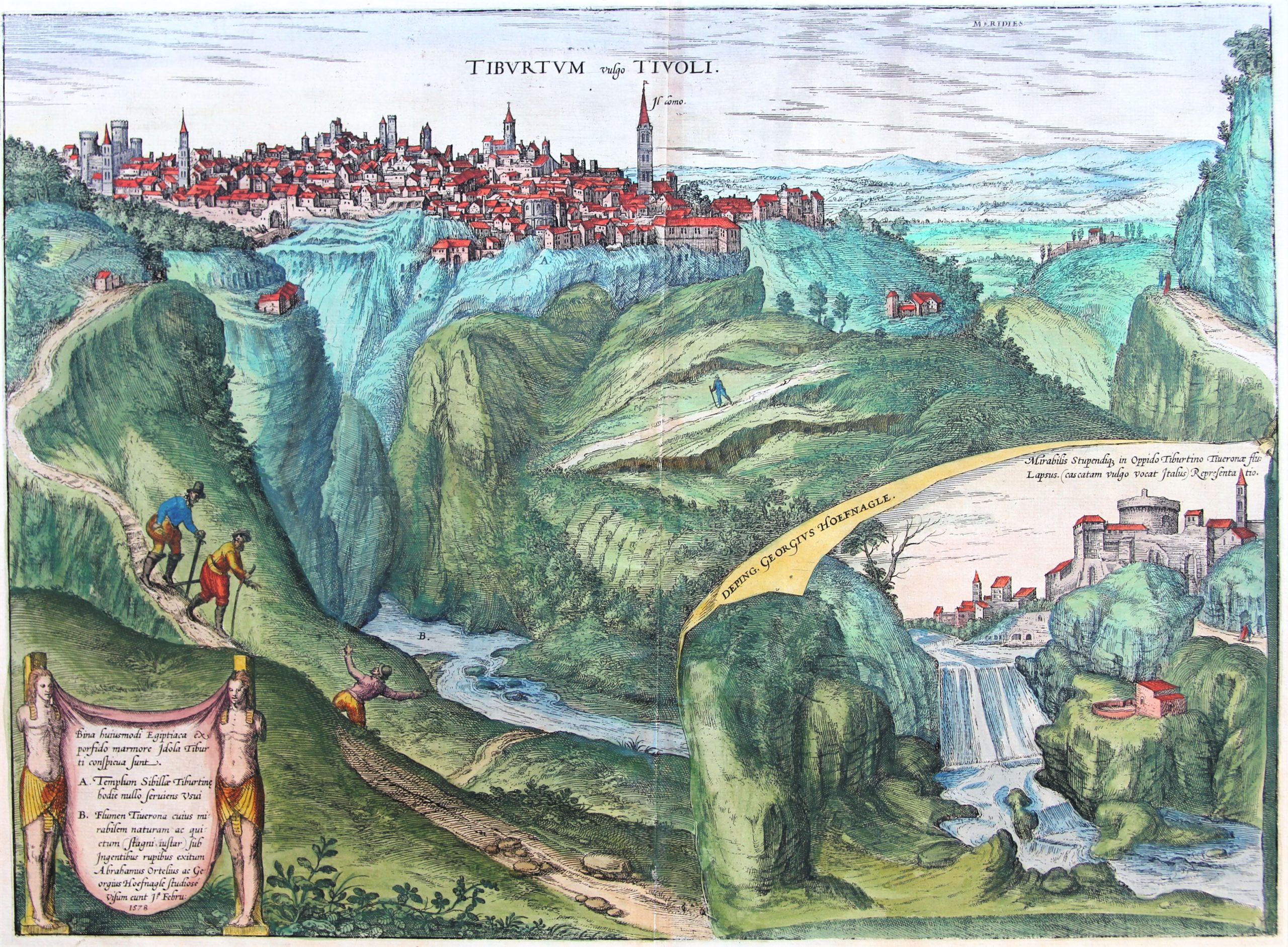
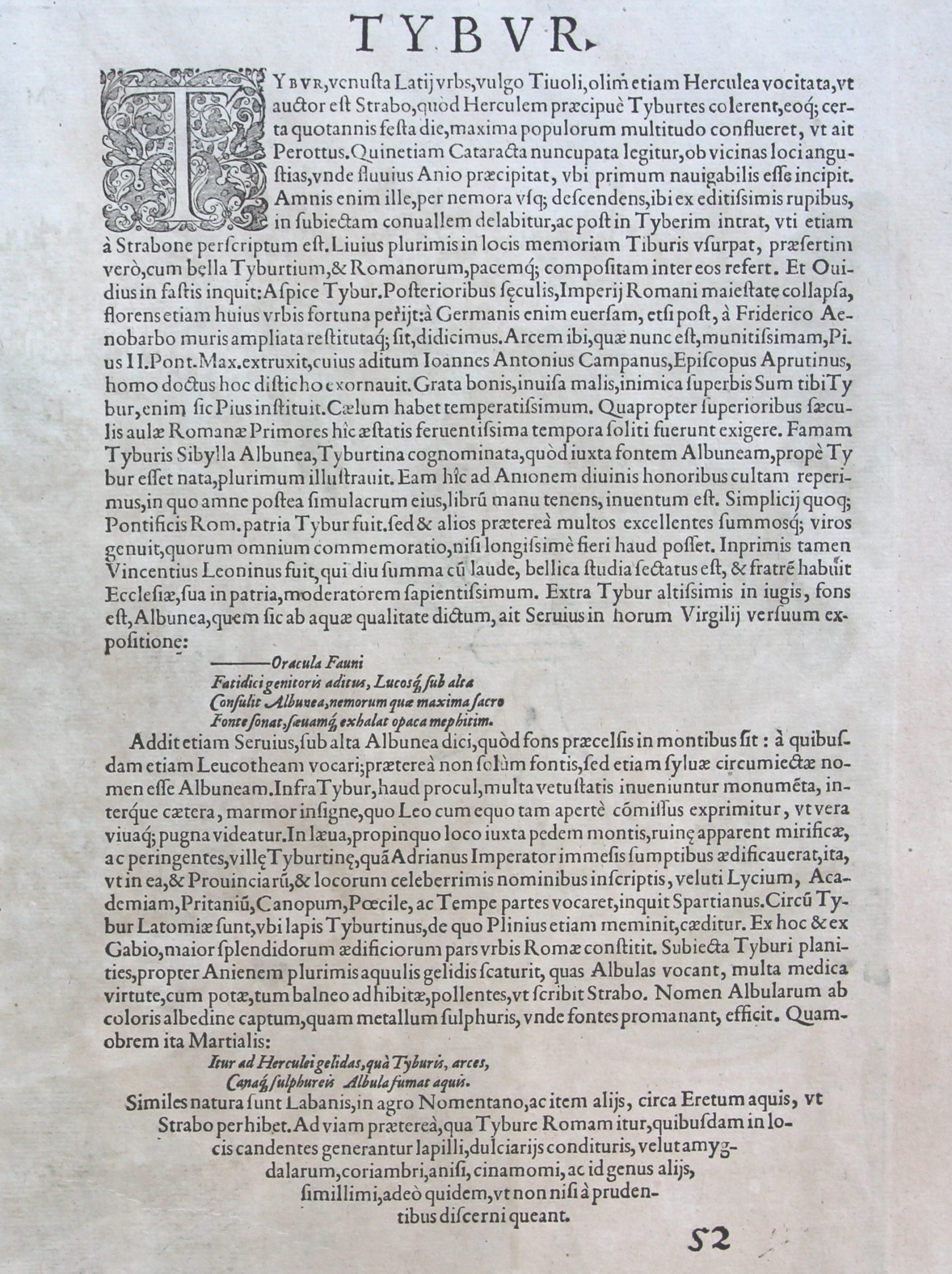
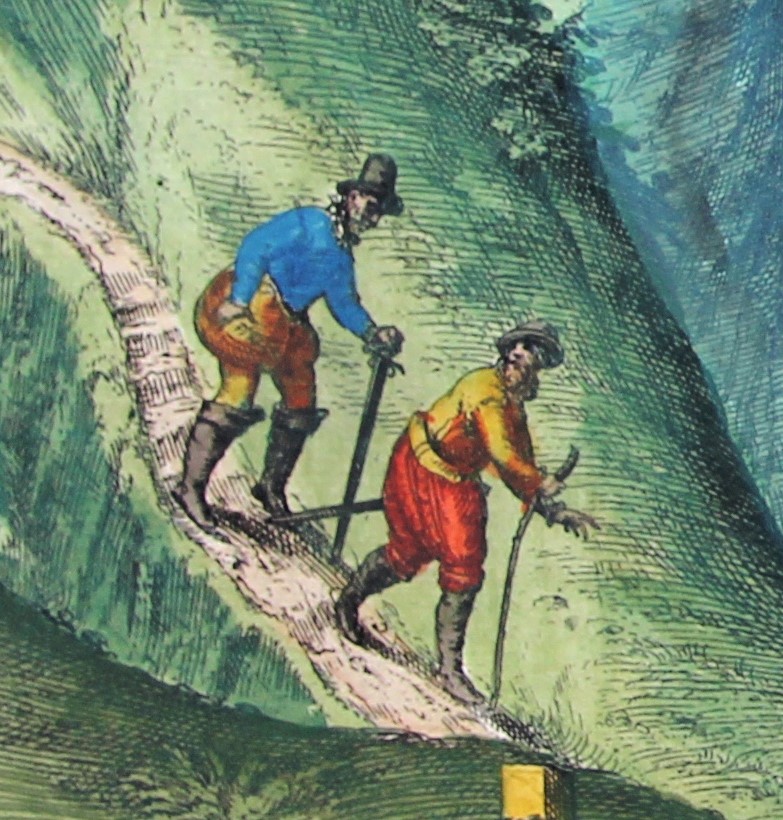
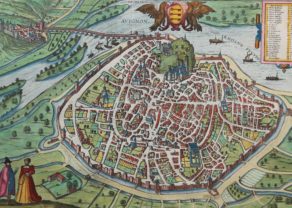
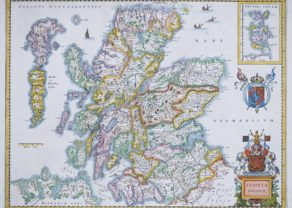
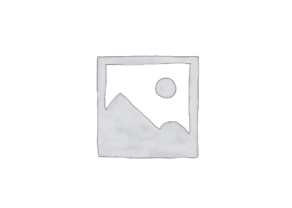
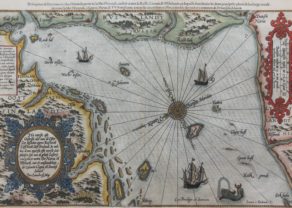
Ortelius and Hoefnagel in Italy
The city of Tivoli, shown from Mount Tiburtini, with an inset of the famous cascading waterfalls.
In the foreground, illustrations of 3 climbers descending the hill include Hoefnagel and Abraham Ortelius, who visited the town and studied it in February 1578, as noted in the decorative cartouche (bottom left and picture). Here they walk down the slopes to see the famous waterfalls.
During their study travel Ortelius and Hoefnagel visited several places, such as Lake Agnano and the extinct city of Cumae, the Gulf of Gaeta, Pozzuoli and , Solfatara. All these places have been eternalised by Braun and Hogenberg.
Below an almost identical painting by Gaspard Dughet (15 June 1615 – 27 May 1675), also known as Gaspard Poussin. He was a French painter, born in Rome. He specialized in landscapes of the Roman Campagna.